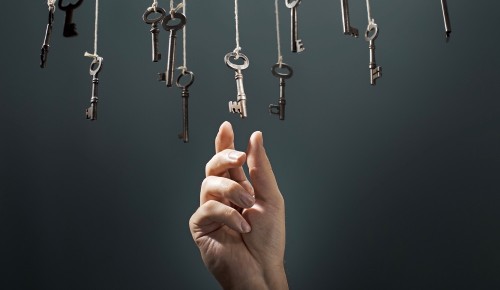Eye Contact, Part 2: You’ve Got Their Attention – Now What?

In my previous article on eye contact, I focused on getting and keeping someone’s attention. Today, we’ll explore some of the psychology behind certain eye gaze behaviors.
Generally speaking, when someone looks you in the eye and maintains relaxed contact (no frowning or squinting), they are signaling that they respect you – maybe even like you! If a person doesn’t make eye contact, then generally, the opposite can be said.
Let’s consider some specifics:
Gaze Avoidance
1. Disapproval
If your boss closes their eyes for longer than a normal blink while facing you, it is likely they disapprove of something you just said or did. Rapid blinking is a sign of anxiety, but a longer closing of the eyes is a way of unconsciously saying, “I don’t want to see (or hear) this.” If your boss were to intensify this blocking behavior with a hand over their eyes, then tread lightly.
2. Social Climbing
The next time you attend a social or networking event, see if you can spot the social climber. This will be a person who is “engaged in a conversation” but always looking out for someone more popular and of higher status with whom to talk. While the social climber’s torso might be facing the person who is trying to engage them, their gaze will be regularly scanning the room.
People also tend to gaze at the “alpha” male or female in a room, so if you follow a social climber’s gaze, you might find that others are gazing in the same direction. If you’re at a networking event looking to make contact with the chairman of a big company, then by all means, let the social climbers lead you there.
3. Recollection
Now, if at that same networking event, someone looks upwards while maintaining their head positioning, they are likely trying to recall a name or detail they would like to share with you. This one of the brain’s ways of shutting out distractions to allow an insight to form.
4. Processing – or Intimidation?
Is the person you’re talking to looking down? They’re calculating/processing, which is different from recalling information.
Looking down can also be an indication that someone is intimidated by you. How can you tell the difference?

If, on the other hand, the person is looking down and has lowered their brows (as in the profile of anger), then they’re processing.
There are cultural exceptions to this – and other – norms. In some cultures, for example, it is disrespectful to make eye contact with someone in a position of authority. It is said that British officers in colonial Africa used to think the locals were deceitful because they would avert their eyes when addressed. This is a common misconception: Liars will often look you straight in the eye to convince you they’re telling the truth and to observe your reaction to their tale.
5. Distraction
If your boss is checking the latest stock prices on their laptop while you are explaining a project’s failure, then they are saying they have more important things on their mind.
If the boss is looking out the window while you tell your tale, they are listening, but probably not buying what you have to say.
Active Gazing
Before you approach the “alpha” at an event, you might want to observe first how they gaze at their admirers. Do they look down their nose until the admirer submits and looks down?
Do they pull a Judge Judy and gaze at their subject as if scrutinizing them? This sort of gaze is more common in a board room, where people tend to move their reading glasses down their noses so they can look at others over their glasses. If that’s what you do, you might want to consider removing your glasses when addressing someone.
Does the “alpha” look angry? Are their eyes narrowed, brows drawn down, and lips tightened?
Under the above circumstances, you should consider approaching with your A-game on or wait for a better opportunity.
On the other hand, if your target is connecting with people through extended, relaxed eye contact, they are likely more interested in the relationship than the content of the interaction itself. Approach with an open heart and mind!
Anthony Awerbuch is a certified body language trainer and an expert in facial expression identification. You can contact him at anthony@bodylanguageonpurpose.com.

